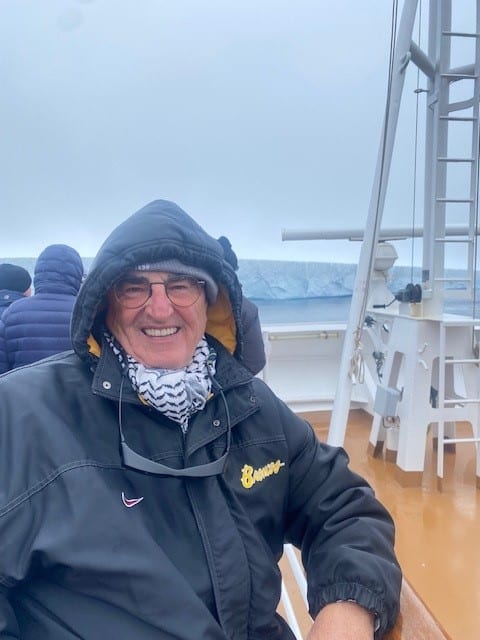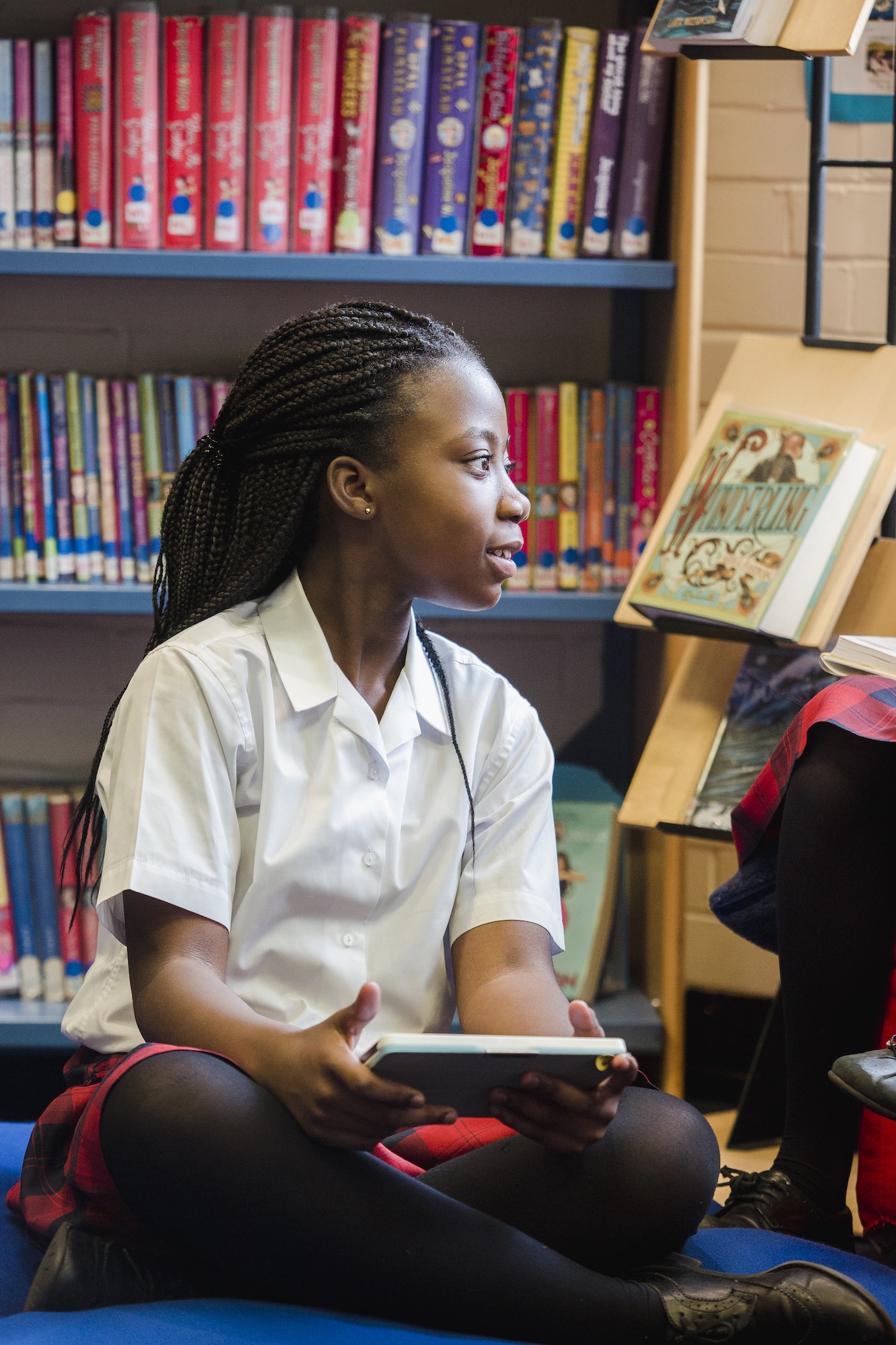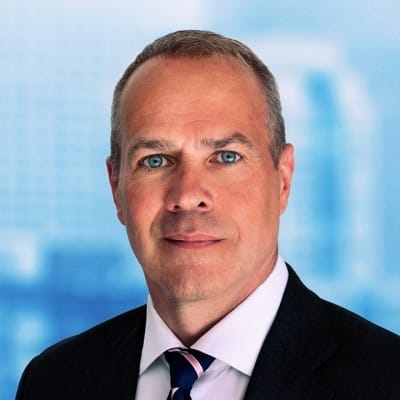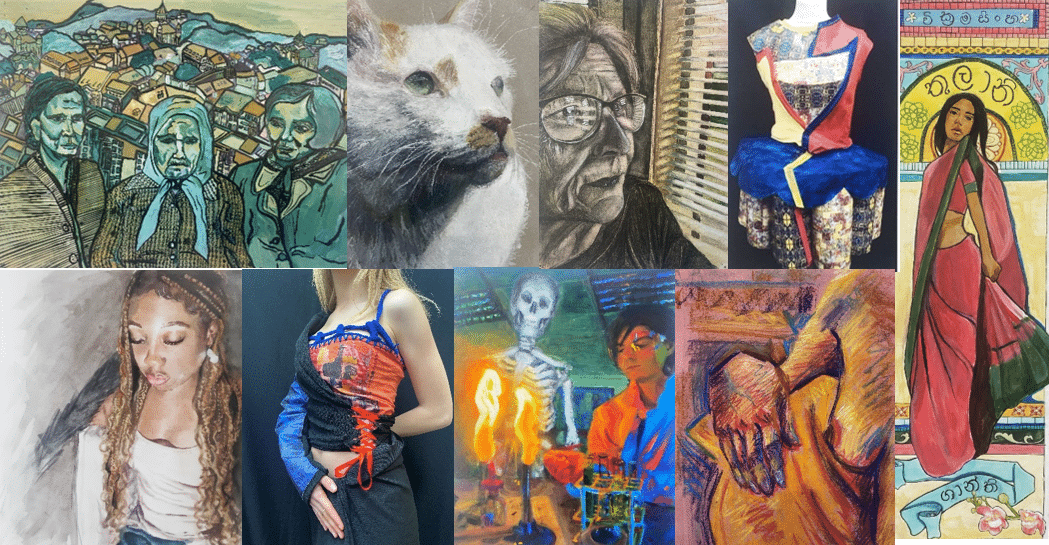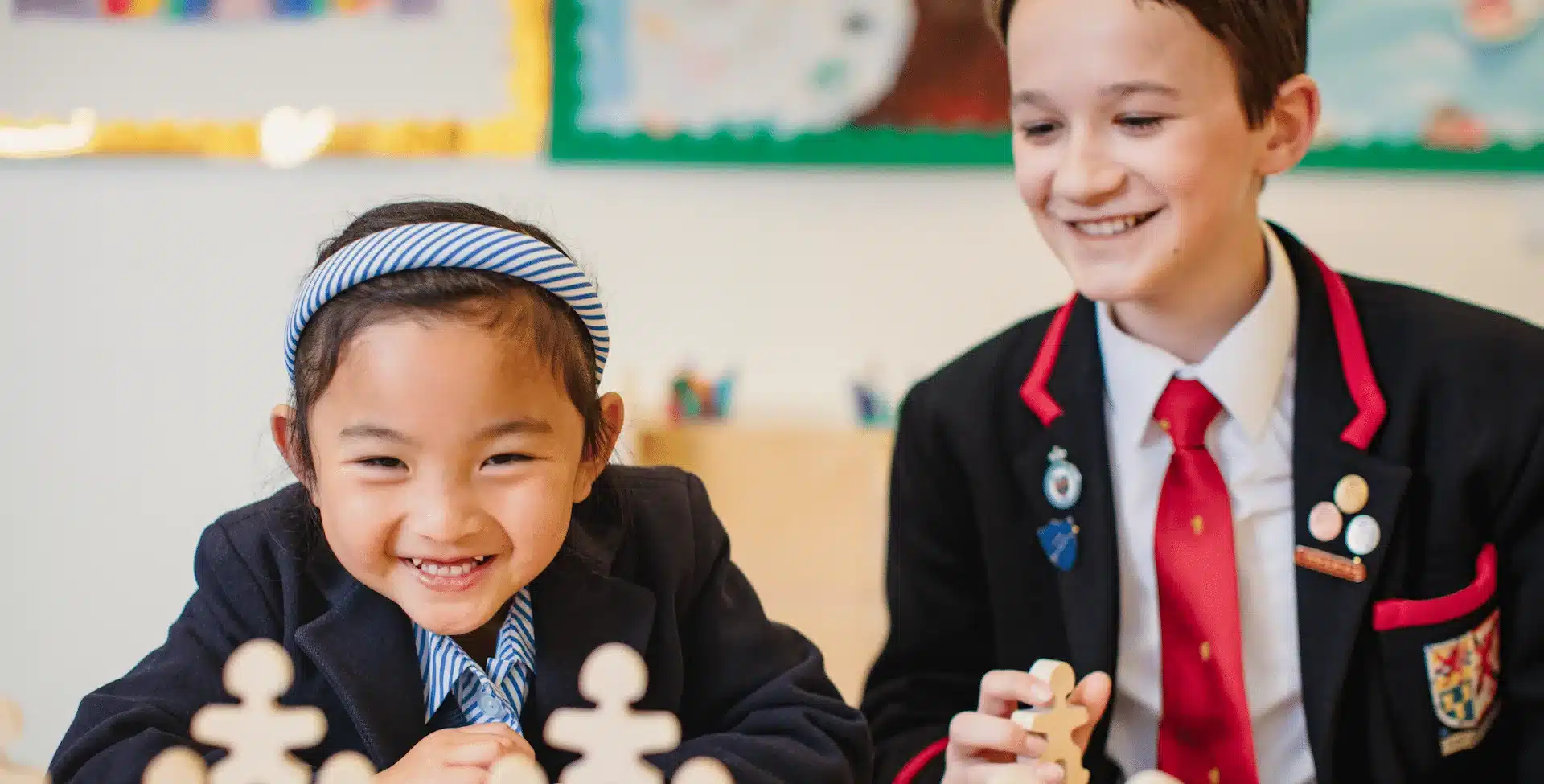What are your most vivid memories of your school days in Edinburgh, and how did your education prepare you for the challenges of your career?
I entered the junior Melville College class of Miss Clark, a new teacher, around 1960/61, followed by subsequent teachers, Pratt, Christie, Drury and others. The building on Melville Street was probably period townhouses linked together internally with a maze of scary corridors and stairs, with more modern additions for science, PE and assembly at the rear. Space was limited so pupils paraded round the Melville Street block for exercise, juniors ran amuck in the basement where they re-enacted war games, a real din at recess. I often wonder how the surrounding office workers managed to concentrate. Other memories are school assembly and the war time readings by headmaster Sherriff, the weekly double decker bus ride to Ferryfield, the Duke of Edinburgh excursions, the horrid CCF uniforms, the gaudy school uniform and shorts in winter and the Usher Hall end of school year prizegiving ceremony.
I left Melville early in 1972 with a fist full of certificates and no idea or guidance what to do next. So, I emigrated to Canada to find myself!
Were there any particular teachers, subjects, or school activities that sparked your interest in science or helped shape your curiosity about the world?
Science at Melville was simple physics and chemistry, I think I had teachers Wilson, Porteous and King. I did OK nothing stellar, but I liked nature and although the subject of Biology was not taught then, I asked if I could use my free class time to study for the leaving certificate in Biology. Mr. Porteous kindly sought out textbooks and past exam outlines and I prevailed, much to the amazement of many, including myself.
What initially sparked your interest in electron microscopy during your time in Edinburgh, and how did your early career shape your scientific journey?
Throughout one’s life you come to a fork in the road where there is the potential for a life-changing career decision to be made. This happened for me late 1972, I was on a gap year in Canada working in hospitality and having the time of my life. I had to decide whether to make a career of it or return to Uni in Edinburgh. After the freedom of working and earning in the real world I was reluctant to return to the discipline of studies again, but I chose to return to Edinburgh for study and work. However, my new employer, the famous Edinburgh Dick Vet College pathologist, Dick Barlow had other ideas. He would give me a job in his pathology department only as long as I went to school in my own time to earn a medical sciences degree. So, it was for 6 years, work by day at Moredun Institute and study at night at Napier University. That fortuitous decision was to introduce me to the pathology department’s Siemens electron microscope. This instrument was to be my saviour for the next 50 years and the nexus for that famous Swedish gong. An electron microscope is a scientific tool that has the potential to resolve/define to the atomic scale the unit blocks of a structure, whether biological or non-biological. However, in the 1960/70’s that promise of electrons could not yet be achieved and was not technically possible for biological systems. But I was still smitten by the beauty of being able to navigate the internal workings of cells, bacteria and viruses, albeit at a crude artefact induced level of preservation. True native, artefact free biological imaging would still be a decade away.
When you were first introduced to an electron microscope at the Moredun Institute, did you ever imagine it would lead to such a ground breaking career?
Prof. Dick Barlow’s mentorship was crucial to my career development, cantankerous at times he was needless to say patient with my youthful misgivings and seemed to recognize a passion I exhibited in photographing the workings of the inner cell. For the last 30 years cell biology had benefited immensely from the skills of X-Ray crystallographer’s and electron microscopists. Now the era of molecular biology was dawning, and scientists craved that they could visualise smaller and finer cellular structures and perhaps the “holy grail” the building blocks of life, DNA, RNA, proteins, alpha helices and enzymes, in a more life-like natural state.
You’ve mentioned the significant role mentors like Professor Dick Barlow played in your life. How did these relationships influence your path toward becoming a pioneer in cryo-EM?
With my Moredun mastered skills and a Napier degree in hand I sought to escape an Edinburgh plagued by miner strike blackouts and Maggie Thatcher politics. Another fork in that road decision. I replied in 1977 to a small advert in “Nature Journal” for the newly established in Heidelberg then West Germany, European Laboratory for Molecular Biology (EMBL). They were looking for scientists with structural biological skills in microscopy.
Can you share how the pivotal moment of discovering vitrification came about and what role chance played in it?
It was truly a “Eureka moment”, around early 1980 I was working at the beautiful EMBL set deep in the Odenwald forest above Heidelberg. The cryobiologist’s challenge for decades was that theoretical physicists believed in the dogma that liquid water could not exist in a solid non-crystalline phase, i.e.: an amorph or vitreous state. The vacuum of an electron microscope where one can theoretically image a specimen to atomic resolution, is totally alien for cells containing 70% or more water. Hence the past 50 years samples were pickled in toxic chemicals, cooked dry, and infused with heavy salts of uranium, lead, osmium, silver, platinum or gold. In other words, DEAD. A skeleton of their former self. Nevertheless biology textbooks were full of stunning representations of cellular architecture. But can you compare a raisin and a fresh grape off the vine, or a fresh tomato and a sun dried one. There is little comparison. To know the building blocks of life you need to keep the water in place and “ALIVE”.
Could you explain the process of vitrification and why it was such a game-changer for structural biology?
Liquid water will not exist in a vacuum for long but solid water will, if kept cold. So, our research brief from EMBL director, Nobel laureate Sir John Kendrew was to be able to get fully hydrated cells and their water into the vacuum of the electron microscope and image the native molecular structure of life. It had never been done before. The eureka moment came after many hundreds of failures, when I chose the right freezing solution, a cryogen, combined with a suitably conductive support and a very thin sample. I recall ushering my mentor Professor Jacques Dubochet, a Swiss scientist, to the microscope to see my latest image of the unusual sample. Like all science you should try all efforts to prove that you could be wrong before accepting that it may have worked. We questioned but knew in our hearts that this was a ground breaking moment. The scientific community was less willing to accept and it took many more experiments to convince the peer review journals, “Nature Journal“ rejected our paper! But we persevered and 4 years later we had the journal cover image on “Nature Journal”.
What were some of the most significant obstacles you faced while developing cryo-EM techniques, and how did you overcome them?
The early 1980’s was an era free of smart phones, Wi-Fi, internet, and personal computers, can you imagine? So, lab life was very different from today’s science environment. There was little track record of previous experiments to rely on and we were in new territory. Much of the technology had to be fabricated in house by trial and error. Only EMBL had the special resources to achieve this. The next decade would see the evolution of powerful computers, digital and direct electron cameras and more stable microscope platforms.
Cryo-EM has been described as a “resolution revolution.” How do you view its role in advancing biomedical research, particularly in areas like vaccine development?
I’d reference the abstract from Nobel Laureate Joachim Frank’s article, quoting “Single-particle cryogenic electron microscopy (cryo-EM), whose full power was not realized until the advent of powerful detectors in 2012, has a unique position as a method of structure determination as it is capable of providing information about not only the structure but also the dynamical features of biomolecules. This information is of special importance in understanding virus−host interaction and explains the crucial role of cryo-EM in the efforts to find vaccinations and cures for pandemics the world has experienced in the past decade.” Joachim Frank “Just in Time”: The Role of Cryo-Electron Microscopy in Combating Recent Pandemics: Biochemistry 2021, 60, 3449−3451
What do you see as the next big challenges and opportunities for cryo-EM in the coming decades?
Scientists and science will have to face serious ethical and social questions in how to interpret and apply their newfound knowledge. The advent of AI, Deepmind and Alpha fold, Crisper Cas-9 technologies have advanced the prospects of designing and reaching for cures for many diseases in the current decade in a timeframe hereto beyond our reach.
How did it feel to contribute to work that earned the Nobel Prize, and what was your experience at the Nobel ceremonies in Stockholm?
The news that Nobel prizes have been awarded occurs in the first week of October each year. That October 2017 I was working at the renowned California Institute of Technology in Pasadena, USA. It was 3.00am and why I woke I’ll never know but I saw a missed phone call from a number I did not recognize. I turned on my laptop to find an email waiting from my friend and college Jacques Dubochet in Switzerland. I was planning soon to retire and to hear this news was immensely satisfying, a real culmination to the end of a career.
It is a rare and an amazing experience to witness the weeks following the announcement, of media and scientific adoration for the achievement. Nobel prize giving week is in mid-December in Stockholm, cold and snowy, but the warm Christmas festivities in the city make up for the winter weather. My wife and I were privileged guests for 10 days in the Grand Hotel Stockholm where all the Nobel committee members, previous and current winners reside, and event organization is conducted. Family and guests were provided with a Stockholm cultural city pass to all the city museums, galleries, transport and events. In addition, there were daily official lectures and receptions given by laureates in all Nobel award categories. We attended a Swiss embassy luncheon as the nationality represented and evening functions and concerts attended by the Swedish king and royal family. The big day of the prize giving ceremony and banquet for 1500 guests is a true extravaganza of royal pomp and ceremony and an occasion that is quite overwhelming and unforgettable for a Mellie FP. Guests have the choice to wear formal evening white tie, coat and tails or their national costume, needless to say I wore the dress tartan and had many compliments. The evening banquet table and hall are decorated in finest theatrical themes of crystal gold and silver and the official evening culminates in dancing in the gold ballroom. However, the party continues for guests to the early wee hours at the University of Stockholm, where students have decorated numerous halls and residents as bars and dance floors.
For the laureates the endless events and media interviews must be tiring, and the Nobel foundation encourages them to continue to share their experience with school children and students around the world now that they are part of an exclusive club of experts. My own experience with interviews, journals, TV and radio continues to this day, many years after the event, and I enjoy talking and motivating kids with my story. I travel to lectures with “Alfred” the Nobel medal gifted to me by the laureates and share a hands on “Alfred” experience with my audience. Recently “Alfred” visited young students at the Ahmed Zewail University in Cairo where I encouraged them to think big like their founder Nobel laureate Professor Zewail.
You’ve been honoured with titles like Member of the Order of Australia. What do these accolades mean to you personally and professionally?
When I interact with students today, I emphasize that more than likely sitting beside them is someone with great potential, promise and personality, their dream must be developed, motivated and encouraged. I ask them to think of life as like making magic with something they have an interest or passion for. I may not have graced the Usher Hall stage while at Melville but I left with a confidence, common sense and commitment to work hard at whatever came my way. To receive an accolade is of course self-gratifying and when I heard that I was to be honored with an investiture at Buckingham Palace in 2019, my first thought was that, if only my parents could see me now. Be considerate and thankful to all those who have mentored your journey to what it is, and if you have been fortunate to achieve, offer to give back your fortune in kind to those in need of guidance.
The career that chose me has been more like a hobby, one that has given me great pleasure and “wealth in career satisfaction, wealth in exploration, wealth in a study of humanity”.
Reflecting on your career, what do you consider your proudest achievement, and why?
When I was quite young, I soon realized that we are only on this planet for a relatively short time, and I would make it my goal to learn a profession that would allow me to see as much of the world as possible in that time. I have been fortunate that I had the means to accomplish this not only for myself but with my family. Passing on my love for exploration, travel and cultures has been a lifelong achievement. As I write this, I am on the sub-continent of Antarctica, truly amazing. Make yourselves a promise to see the world and make a difference.
Cryo-EM is now a fundamental tool across disciplines. How do you see it fostering collaborations beyond traditional biology and chemistry?
The Nobel laureates for chemistry 2017, reflected that as researchers they were physicists, studying biology, using computer science and were honoured with an award for chemistry. Today’s scientists rely on multidisciplinary skills and tools to find answers. You’ll find academic faculties of bioengineering, biochemistry, biocomputing, biophysics, bioethics etc., The bridge to discovery and the realization of new and successful pharmaceutical drug therapies is a long process involving a plethora of such disciplines and commercial agencies. The promise of being able to take a “protein soup” from pathogenic or disease producing cells and select the likely potential disease components. Then image directly to atomic resolution the protein folds and amino acid side chains to offer a confident candidate for further structural analysis and drug therapy verification, all within a few weeks of sampling from a patient is now a remarkable reality.
You’ve trained and mentored many young scientists. What advice do you give them about pursuing a career in research?
There are many career levels in research, each suited to the ability, desire, passion of the applicant. At each level one may find a satisfying standard of living, and more important one suited to contentment of life goals or happiness. The science community has an approach of thoughtful, respectful and commonsense thinking. Often conducted in beautiful surroundings and buildings. Research as a career can be transported across the globe, with a common language. Perhaps financially wealth limiting for many, but with employee benefits and retirement saving schemes that compensate, a comfortable lifestyle exists. Opportunities exist for those with creative thinking, whose cutting-edge ideas and theories can be tested, and taken to the next level with professional patent licensing guidance and potential commercial success with “big pharma”?
With the rise of powerful techniques like cryo-EM, what ethical considerations do you believe scientists need to address in their work?
Science and society now and in the future must coexist with the sharing and transparent exchange of information. Scientists have long used the power of artificial intelligence programmes to assist in refining predictions and when combined with accurate and tested scientific regimes, the progress in discovery is hugely beneficial to mankind. However, science has the duty to their stakeholders, citizens, taxpayers and governments to ethically educate, fact-check and police their findings. This is not new, I recall in the early 1970’s scientists intensely debating the risks and ethics of the new technology of molecular cloning, now conducted routinely on your local laboratory bench top.
You’ve lived and worked in many countries. How have your global experiences shaped your perspective on science and its universal importance?
Discovery and scientific exploration are global endeavors, with most countries openly and freely sharing or exchanging information. Science discovery, however, must be paid for and it does not come cheaply. Funding their research is a constant challenge for scientists and occupies much of their time and effort. Governments are conservative and cautious with releasing financial resources for research, so it is beholden to citizen voters to poll their politicians to support worthy scientific research and be generous as private benefactors.
If you could go back and give advice to your younger self at the start of your career, what would it be?
Youthful errors, mistakes and indiscretions are part of growth, learn from them, improve and progress to be more self-assured, respectful and cognizant of risks on the journey ahead.
And finally, what is your favourite memory from your time at school?
The 3pm daily final school bell. Seriously, my classmates, I am still dearly in fond contact with them to this day.
